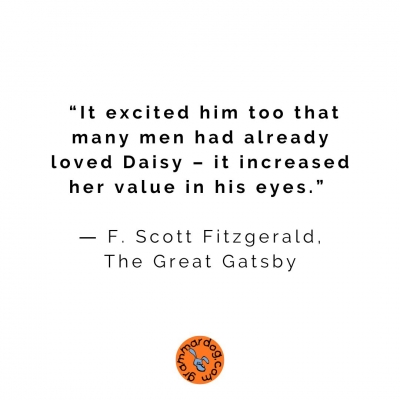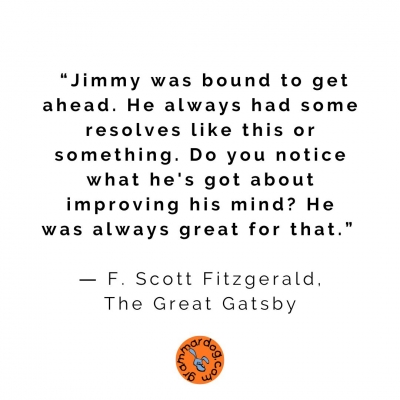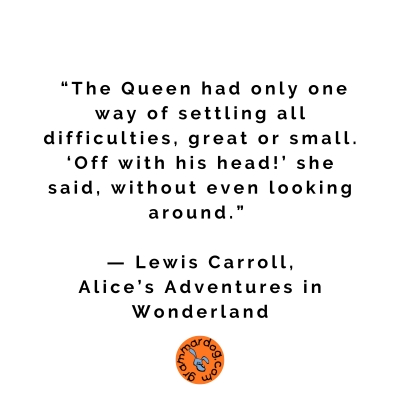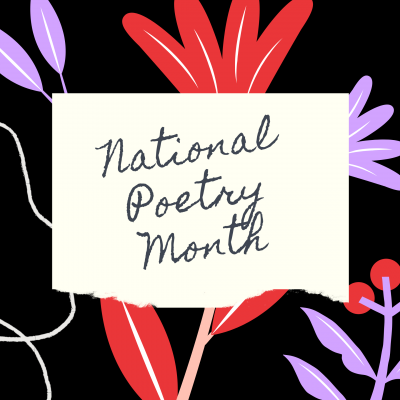Can a novel really start a war? Uncle Tom’s Cabin by Harriet Beecher Stowe may have done just that. According to the Library of Congress, when Abraham Lincoln met Harriet Beecher Stowe at the White House in 1862, the legend is that Lincoln said, “So this is the little lady who made this big war.” Whether or not Lincoln actually said that, there is no question that Stowe’s novel was a catalyst for the Civil War.
Uncle Tom’s Cabin was originally published in 1851 in installments in an abolitionist newspaper, The National Era. As detailed in Stowe’s biography by the Harriet Beecher Stowe Center, the publisher asked Stowe to write a story that would “paint a word picture of slavery.” The more than 40 chapters Stowe wrote became popular as they were passed from reader to reader. The stories caught the attention of publishers. In 1852 the novel Uncle Tom’s Cabin was published in a two-volume set that sold 10,000 copies in the first week and 300,000 copies in the first year. In Great Britain, the novel sold 1.5 million copies the first year. Uncle Tom’s Cabin was the second best-selling book of the 19th century, surpassed only by the Bible. The novel dramatically shifted public opinion on the issue of slavery. More than 170 years later, the book has been translated into 70 languages.
In the canon of African-American literature, Uncle Tom’s Cabin has had its ups and downs in popularity and acceptance as a seminal work. Some of the criticism includes the fact that the book was written by a white woman who lived in Maine when she wrote the book. Another problem that has skewed the reputation of the book is the slang term “Uncle Tom” used to describe an African-American who pleases white people. The term is an erroneous perception of the title character. In the book, Uncle Tom is a martyred hero. He is whipped to death by his sadistic owner Simon Legree for refusing to disclose the hiding place of two escaped women slaves whom Legree sexually abused.
In a 2008 NPR interview, Patricia Turner, Professor of African-American and African Studies at University of California at Davis sheds light on how Uncle Tom became an insult. Turner explains that after the novel was a runaway bestseller, plays based on the book were created. The plays toured the U.S. under the title “Uncle Tom’s Cabin.” Producers of the shows did not think audiences would accept the character of the slave Uncle Tom as a hero. To sell tickets, the producers changed the story and the character of Uncle Tom. They turned Uncle Tom into a minstrel show character who curried favor with his white master. The stereotype designed to please white audiences was spread across the country by the traveling shows and Uncle Tom eventually became a slur that eclipsed the heroic image of Uncle Tom in the novel.
Uncle Tom’s Cabin has also been criticized for being sentimental and less than literary in style. The sentimental novel was the most popular literary form of its time. The fact remains that Uncle Tom’s Cabin still satisfies readers. The book has been called “the most important novel in American history” by Slate. Goodreads describes Uncle Tom’s Cabin as “a compelling adventure story with richly drawn characters.”
The traveling shows that distorted Uncle Tom’s Cabin functioned as the pop culture of their day. Readers who return to the original text will meet the real Uncle Tom and will be rewarded by a good read of a book that changed the world.
Booker T. Washington’s autobiography Up From Slavery is a good read that students like. The book tells the story of what happened to Washington after he became a freed slave in Virginia at the age of nine when the Civil War ended. Washington was the most prominent African American of his time and a leading 19th century intellectual. His life story is as inspirational today as when it was published in 1901. Up From Slavery remained a bestseller for 60 years after it was published and is widely read today. The reading level for Up From Slavery is 5th through 12th grades. Two of the main themes of the book are the dignity of work and the value of education.
Washington’s story is so compelling because he rose from slavery to become an educated man who knew business tycoons, presidents and kings. He raised close to two million dollars for Tuskeegee Normal School (Hampton University today), the equivalent of more than 53 million dollars today. Washington received many honors including the following:
• Booker T. Washington was the first African American to be invited to the White House. In 1901 President Theodore Roosevelt invited Washington to dine with him and his family.
• The first U.S. postage stamp to honor an African American was issued in 1940 with the portrait of Booker T. Washington on the 10 cent stamp.
• The first U.S. ship named for an African American was launched in 1942. The Booker T. Washington, a cargo carrier, was christened by African American opera star Marian Anderson.
• The first U.S. coin to feature an African American, the Booker T. Washington half dollar, was issued in 1946.
• Numerous elementary, middle schools and high schools are named Booker T. Washington.
The National Council of Teachers of English (NCTE) has created the National African American Read-in to celebrate Black History Month. One of the best choices for a Read-in is Chapter 3 of Up From Slavery. The chapter opens with Booker T. Washington working in a coal mine in West Virginia. He is inspired when he overhears two miners talking about a college for African Americans in Virginia. Washington winds up walking 500 miles to enroll in the college, Hampton Normal Agricultural Institute (Hampton University today). He works odd jobs enroute to pay for food. By the time he reaches Richmond he has 82 miles to go to get to Hampton. He has no money, so he sleeps under a wooden sidewalk. The next day he gets a job unloading a ship to earn enough money to buy breakfast.
When Washington finally arrives at Hampton, he is a dirty, ragged candidate for admission. The head teacher takes one look at him and decides to test Washington to see what he’s made of. She asks him to clean a classroom. Washington remembers that this was his moment to shine. He had been taught how to clean to perfection. He sweeps the floor three times and dusts the room four times. He moves all the furniture and cleans under it. He cleans inside the closets. He cleans the baseboards. When the head teacher looks for dirt and cannot find any, she admits him to the college.
Is there an accurate movie version of the novel Dr. Jekyll and Mr. Hyde? The answer is no. Hollywood has produced seven movies of Robert Louis Stevenson’s enduring tale. Every one of them adds characters who are not in the book. All but two of the movies omit the important character of Mr. Gabriel John Utterson, Dr. Jekyll’s lawyer. Some of Hollywood’s biggest stars have been cast in the films, including John Barrymore, Spencer Tracy, Ingrid Bergman, Mickey Rooney, Miriam Hopkins, Jack Palance and Fredric March who won the Best Actor Oscar for his portrayal of Jekyll and Hyde in the 1931 movie version. For all their popularity, the films do not follow the book.
Why can’t Hollywood get it right when it comes to Dr. Jekyll and Mr. Hyde? Here are a few reasons . . .
• Dr. Jekyll and Mr. Hyde is a psychological story. The book is long on clues and short on action. The reader knows only what Mr. Utterson sees and knows. If a filmmaker told the story chapter by chapter, the resulting movie would be vague and boring.
• The details of Mr. Hyde’s decadence and debauchery are implied, but not stated. What did Hyde do when he went out on the town at night? Where did he go? The author Stevenson doesn’t say. He gives no specific details about Hyde’s activities. Stevenson hints that Hyde is up to no good, but he doesn’t spell it out. Is Hyde a thief? A rapist? A serial killer? A terrorist? Screenwriters have had free rein to fill in the blanks.
• The drugs Dr. Jekyll concocts present a challenge for screenwriters. In the book when Jekyll drinks the formula, the chemicals change his personality, but also his physique. Movies can’t recreate Jekyll’s transformation in the novel. The book describes Hyde as “dwarf-like” and “ape-like.” It is impossible for an actor to become shorter, so costume and makeup pros give Hyde dark, hairy skin. Since an actor can’t shrink in size, he stoops, slumps and bends over as he walks.
• Two crimes are not enough for movie audiences. The book states that Hyde trampled a little girl and beat a man to death with a cane. That’s it. Screenwriters are obliged to make up Hyde’s crimes and wild adventures. An easy choice is to add violence and scenes of Hyde’s sexual escapades.
• Women characters are invented to depict the depravity of Hyde. The only female characters in the book are a reference to a little girl Hyde trampled and an unnamed maid who happened to be looking out her window and witnessed Hyde murdering Sir Danvers Carew. Hollywood made a whole movie about the maid, Mary Reilly starring Julia Roberts. Most film versions portray Hyde as a sadist who abuses women.
• Casting big name actors and actresses in a film boosts box office revenue. Adding characters who are not in the book is a way to add star power.
• Dr. Jekyll and Mr. Hyde is a short novel with only 10 chapters, some of which are two pages long. Screenwriters must add more scenes to the story. Scenes that depict Hyde’s bad behavior have become the main plot of the movie versions.
The subtlety and mystery of the novel is its power and explains why it has endured as a work of literature. Robert Louis Stevenson deliberately omitted the details of Hyde’s crimes and sins. The author leaves Hyde’s antics to the reader’s imagination, making Dr. Jekyll and Mr. Hyde a sort of interactive novel that connects to the psyche of the individual reader. The uniqueness of the novel limits the possibility of an accurate movie version.
Which movie version is the best? Although the movie is not like the book, the 1941 film Dr. Jekyll and Mr. Hyde at least has the best cast of all the movie versions. Spencer Tracy plays Dr. Jekyll and Mr. Hyde. Ingrid Bergman plays Ivy Peterson, a woman Hyde seduces and holds under his spell. Lana Turner plays Dr. Jekyll’s fiancé Beatrix Emery. The three stars deliver memorable performances, and the story line is minimally accurate.
The reward of reading a book is a happy ending – or at least a satisfactory one. You read hundreds of pages that follow the hero or heroine through challenges, setbacks and triumphs. Surely love and justice will win in the end. It’s a letdown when you find out the heroes do not meet with the happy ending they deserve. Readers long for closure and resolution. Here are some of the most unsatisfying endings in literature . . .
1. The Great Gatsby. The reader wants Daisy Buchanan to leave her brutish husband Tom and run away with Jay Gatsby. After all Daisy loves Jay and she is trapped in an unhappy marriage. In a tragic mix-up, the husband of Tom’s mistress thinks Gatsby was driving the car that killed his wife. He guns Gatsby down as the innocent Jay floats in his swimming pool.
2. Tess of the D’Urbervilles. After following Tess from childhood through the ups and downs of her life, she is finally reunited with Angel Clare, her husband and the only man she has ever loved. Okay, after Angel resurfaces Tess kills her rapist with a butter knife and runs away with Angel. But surely the court will let her off. Or not. Dear, sweet Tess is hanged, and Angel runs off with her sister.
3. Ethan Frome is the story of a good man. Mattie, his wife Zeena’s cousin, is a good woman. Even though Ethan and Mattie are deeply in love, they refrain from consummating their passion out of moral principles. Their only choice is to kill themselves. They board a sled and push off down a snow-covered hill and aim the sled for a tree. Boom! They hit the tree, but as a result of the accident Mattie is paralyzed and Ethan is crippled. Who takes care of Mattie? Ethan’s wife.
4. Billy Budd – what a guy! All the sailors on the ship love and admire him. The crew despises the cruel master-at-arms John Claggart who falsely accuses Billy of conspiracy to mutiny. Out of frustration Billy hits Claggart so hard it kills him. The crew and even the captain feel that Claggart had it coming, but Billy is hanged anyway.
5. Randle McMurphy in One Flew Over the Cuckoo’s Nest is a charming anti-hero who gives new life to patients in a mental hospital. McMurphy helps patients regain confidence and purpose. The reader wants Nurse Ratched fired and McMurphy and others released from the mental ward. In the end McMurphy is given a lobotomy and is reduced to a vegetative state. Chief Bromden mercifully smothers McMurphy and escapes from the hospital.
6. The Last of the Mohicans is a long book that chronicles the early British settlers’ relationship with native tribes. Toward the end of the book 2,000 Huron warriors massacre British soldiers, women and children. It’s downhill all the way after the attack. By the end of the book favorite characters are kidnapped and killed, and the final pages describe their funerals.
7. Huckleberry Finn leads the reader on an exciting adventure. He stages his own murder and runs away from his abusive father. He and runaway slave Jim share pleasures and dangers as they float down the Mississippi. When they miss the turn north to the Ohio River due to fog, they find themselves heading south into slave states. Tom Sawyer finally shows up and rescues Huck and Jim is freed. The reader thinks Huck will return to Missouri, go to school and have a good life. But nooooo! Huck rejects a civilized life and runs away again – this time to the Oklahoma Territory.
8. A Farewell to Arms immerses the reader in the unpredictable events of World War I. The hero Frederic finds love with Catherine, a nurse in Milan. After deserting, risking capture and execution, Frederic finds Catherine and they escape in a rowboat to Switzerland. Catherine becomes pregnant. Happiness is on the horizon, but nooo! Catherine dies giving birth to a stillborn baby boy. Frederic walks away in the rain.
9. All the King’s Men chronicles the rise of Willie Stark from good ole boy in the South to a crooked politician. But no way does the good ole boy deserve to die from assassination on the state senate floor by the irate brother of Willie’s mistress.
10. Hester Prynne in The Scarlet Letter really deserves a happy ending. She has suffered imprisonment and public humiliation for giving birth to a child in her husband’s long absence. Hester refuses to disclose the name of the child’s father. Her plan to run away to England with Reverend Dimmesdale, the father of her little girl, is within reach. They almost make it, but Dimmesdale dies hours before they are scheduled to board the ship.
Hollywood just can’t get Daisy Buchanan right. In movie versions of The Great Gatsby Daisy is portrayed as a neurotic blonde. Daisy was not like that. Both Mia Farrow in the 1974 film and Carey Mulligan in the 2013 movie play inaccurate portraits of the woman who triggered Jay Gatsby’s obsession. In the book Daisy is a sultry, southern brunette with a low, seductive voice. The on-screen switch in the Daisy character’s looks and personality leaves the viewer puzzled. Why is Gatsby so stuck on the weak, nervous woman in the movie versions? If the movie audience could see the novel’s version of Daisy, a refined, sensuous, dark-haired beauty from Kentucky, Gatsby’s fascination with Daisy and his compulsion to win her back would make sense. Roger Ebert’s review of the 2013 film makes the point that if Carey Mulligan had matched the book’s description of Daisy, viewers would have understood why Gatsby idealized her.
The book describes Daisy as a woman so desirable that she casts a spell on men. She has dark, shiny hair and a pale face (Chapter 8). Part of Daisy’s allure is her low voice and southern accent. She stretches out her syllables in a southern drawl as she croons to her young daughter: “Bles-sed pre-cious. Did mother get powder on your old yellowy hair?” (Chapter 7). At Gatsby’s party Daisy sings along to the orchestra in her sweet contralto voice (Chapter 6). Daisy’s southern roots emerge at the Plaza hotel where she orders a mint julep, the Kentucky Derby cocktail. Her southern accent makes her voice “glowing and singing” (Chapter 1), “a deathless song” (Chapter 5). Daisy’s voice had “the inexhaustible charm that rose and fell . . . the jingle of it, the cymbal’s song of it . . .” (Chapter 7). Daisy murmured in a “low thrilling voice men who cared for her found difficult to forget” (Chapter 5).
Daisy was sensual, but she was not a temptress. She was a woman with feminine charisma. Her magnetism is described as “warm human magic” (Chapter 6) and “the pale magic of her face” (Chapter 8). For Gatsby, Daisy’s allure was more than her looks and the “fluctuating, feverish warmth” of her voice (Chapter 5). Gatsby found Daisy “excitingly desirable” (Chapter 8) because he was drawn to her wealth and breeding. As the most popular girl in Louisville, Kentucky, Daisy lived in a grand, elegant home. Her family were Louisville society. To Gatsby she gleamed “like silver” (Chapter 8). In Chapter 7 Gatsby tells Nick Carraway that Daisy’s voice “is full of money.” Nick realizes that to Gatsby, Daisy is a prize. That other men adore her adds to her “value” (Chapter 7). Gatsby sees Daisy “high in a white palace, the king’s daughter, the golden girl . . .” (Chapter 7). Pursuing Daisy became Gatsby’s obsession because she fulfilled his dream of success. In chasing after her, Gatsby “had committed himself to the following of a grail” (Chapter 8).
The movie versions of The Great Gatsby capture most of the characters in the book accurately – except Daisy. What a difference a warm, sultry, southern brunette would make on the screen. Gatsby’s obsession with Daisy would then make sense.
Gatsby’s secret to success was his dedication to self-improvement. His routine was an American tradition that harks back to the prescribed formula for success found in Benjamin Franklin’s autobiography. When he was a farm boy named Jimmy Gatz in South Dakota, Gatsby set out to improve himself. Like Franklin, Gatz was poor with a limited education. Franklin’s formal education ended when he was ten years old. From that time forward, he was self-educated. He became a printer, author, scientist, philosopher and diplomat through his own efforts at self-improvement. Franklin explains in his autobiography how he would make charts for the week on which he kept track of his progress in perfecting his character. Gatz also made charts and kept track of exercising, reading and studying. Both the fictional Gatsby and the real man Franklin aspired to a life beyond the circumstances into which they were born. Their passport to a better life was their dedication to improving themselves.
In Chapter IX of The Great Gatsby, Jay Gatsby’s father Henry C. Gatz tells Nick Carraway that his son “was bound to get ahead” because of his daily resolves. Gatz shows Carraway his son’s routine written on a blank page in the back of the book Hopalong Cassidy.
SCHEDULE
Rise from bed 6:00 A.M.
Dumbbell exercise and wall-climbing 6:25-6:30 A.M.
Study electricity, etc. 7:15-8:15 A.M.
Work 8:30-4:30 P.M.
Baseball and sports 4:30-5:00 P.M.
Practice elocution, poise and how to attain it 5:00-6:00 P.M.
Study needed inventions 7:00-9:00 P.M.
GENERAL RESOLVES
No wasting time at Shafters or [a name, indecipherable]
No more smoking or chewing
Bath every other day
Read one improving book or magazine per week
Save $5.00 [crossed out] $3.00 per week
Be better to parents
Did F. Scott Fitzgerald borrow the idea of a self-improvement routine from The Autobiography of Benjamin Franklin published in 1771? Possibly. Or perhaps the idea of self-improvement proposed by Franklin had taken root in American culture. That an American from a poor family can rise to great heights is a key component of the American Dream. Franklin merely proved that the dream of social and economic mobility could be achieved. Here is Franklin’s routine:
Franklin constructed a weekly chart. Across the top were days of the week. On the far left were his 12 self-improvement goals. He would write an asterisk next to a goal he had achieved on a specific day. His goals were:
1. Temperance. Eat not to dullness; drink not to elevation.
2. Silence. Speak not but what may benefit others or yourself; avoid trifling conversation.
3. Order. Let all your things have their places; let each part of your business have its time.
4. Resolution. Resolve to perform what you ought; perform without fail what you resolve.
5. Frugality. Make no expense but to do good to others or yourself; i.e., waste nothing.
6. Industry. Lose no time; be always employ’d in something useful; cut off all unnecessary actions.
7. Sincerity. Use no hurtful deceit; think innocently and justly; and, if you speak, speak accordingly.
8. Justice. Wrong none by doing injuries or omitting the benefits that are your duty.
9. Moderation. Avoid extremes; forbear resenting injuries so much as you think they deserve.
10. Cleanliness. Tolerate no uncleanliness in body, clothes, or habitation.
11. Tranquility. Be not disturbed at trifles, or at accidents common or unavoidable.
12. Humility. Imitate Jesus and Socrates.
Franklin’s daily routine is similar to that of Jimmy Gatz.
5 A.M. – 9A.M. Rise, wash, and address Powerful Goodness! Contrive day’s business and take the resolution of the day; prosecute the present study, and breakfast.
9 A.M. – Noon. Work
Noon – 1 P.M. Read, or overlook my accounts, and dine.
1 P.M. – 6 P.M. Work
6 P.M. – 9 P.M. Put things in their places. Supper. Music or diversion, or conversation. Examination of the day.
10 P.M. Sleep.
Franklin writes: “But, on the whole, tho’ I never arrived at perfection I had been so ambitious of obtaining, but fell far short of it, yet I was, by the endeavour, a better and a happier man than I otherwise should have been if I had not attempted it.”
Two movies full of dark satire are winning awards in 2023. The Banshees of Inisherin features self-mutilation and arson as a means of un-friending a long-time companion. The Menu uses ultra-dark gallows humor, including suicide, mutilation and mass-murder as a problem-solving solution to life’s annoyances. Both comedy genres are tools of satire. Dark comedy mocks the worst human conditions like poverty, sexism, racism, ageism, animal cruelty, failures and setbacks. Gallows humor makes fun of death, suicide, torture, execution and life-threatening situations like war, disease and famine.
Thousands of years before George Carlin, Bill Maher or The Daily Show, Aristophanes, the “Father of Comedy,” poked fun at politicians, generals, elite citizens and the general hypocrisy he observed in 450 B.C. in Athens. Other satirists followed, including Dante, Chaucer, Cervantes, Shakespeare, Moliere, Voltaire, Swift, Carroll, Shaw, Ionesco and Vonnegut. Today late-night TV comedy skits by Saturday Night Live, Stephen Colbert, Seth Meyers and others use satire, but rarely resort to dark comedy and gallows humor for laughs.
The actors in Banshees and The Menu don’t wink, jest, or play for laughs. Dark comedy and gallows humor require a solemn tone for impact. The characters in Voltaire’s Candide (1759) interact in earnest as if the plot sequences are entirely plausible. They suffer kidnapping, disease, flogging and the loss of body parts as they flee pedophiles, rapists, wars, earthquakes, the Spanish Inquisition and Jesuit missionaries. Playing it straight is the key to dark humor. The narrator of Jonathan Swift’s A Modest Proposal (1729) seriously suggests the solution to the problem of starving beggars is to eat their babies. In Lewis Carroll’s Alice’s Adventures in Wonderland (1865), “The Queen had only one way of settling all difficulties, great or small. ‘Off with his head!’ she said, without even looking around.”
Movie audiences have been numbed by blockbuster action films and super-hero sequels. The linear plot lines are devoid of satire, irony and subtlety. The Banshees of Inisherin and The Menu make audiences think and reflect on what exactly is being ridiculed. The dark comedy trend may not last, but for at least this year, a few movies reach the height of cinematic art.
April is National Poetry Month, a celebration that could lift your spirits at such a trying time. Social distancing and isolation have increased anxiety and boredom. Those who are trying to entertain and teach school age children may want to check poets.org/national-poetry-month that features a treasure trove of free resources and activities, including a free poster, Dear Poet, Poem-a-Day, and the Shelter in Poems feel-good collection. My personal favorite poetry resource is the DVD from the old HBO series Classical Baby: I’m Grown Up Now: The Poetry Show. The animated series features the voices of John Lithgow, Gwyneth Paltrow, Andy Garcia, Susan Sarandon and others reading poems by Frost, Shakespeare, Browning, et al. It’s available from Amazon.
Enjoy these 5 "feel good" movies you may not know that are low-stress and highly uplifting. What are your favorite "feel good" movies?
1. Far From the Madding Crowd
2. The Hundred-Foot Journey
3. Hotel For Dogs or read the book
4. Under the Tuscan Sun
5. The Secret Life of Walter Mitty
Who else loves a crunchy and healthy snack that's not boring like carrots or celery? Move over boring health foods, you do not bring me joy! Small changes like adding a few of these snacks are important and can make a big difference not only in how you feel physically, but mentally.
Here are 5 that we're obsessed with. Enjoy with your favorite hummus, guac, salsa or by themselves! What are some of your favorite healthy snacks that excite you?
1. Real Food From The Ground Up Cauliflower Stalks
2. Real Food From The Ground Up Butternut Squash Pretzels
3. Siete Grain Free Tortilla Chips
4. Popcorners Snacks Variety Pack
5. Angie's BOOMCHICKAPOP Sea Salt Popcorn


_2_4793b42f53.jpg)
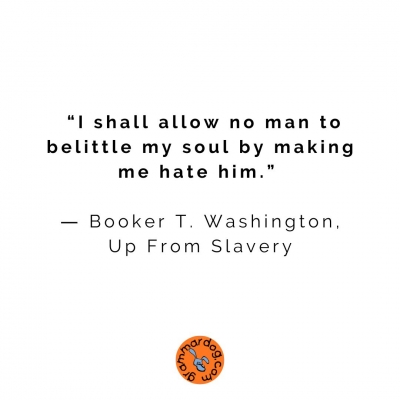
_ec476a2708.jpg)
_4439afbfda.jpg)
